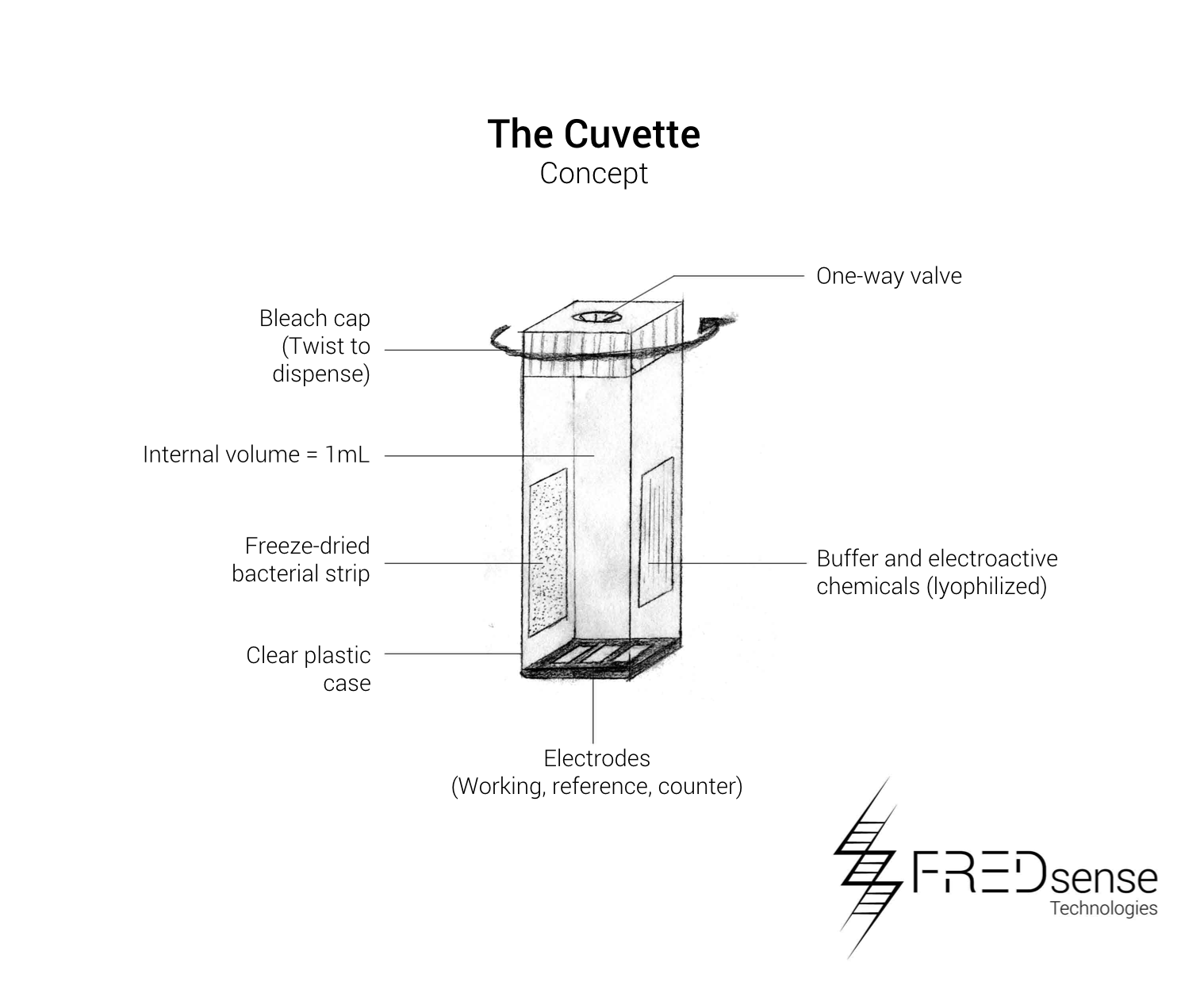Team:Calgary Entrepreneurial/Project/Manufacturing
From 2013.igem.org



FREDsense's website works best with Javascript enabled, especially on mobile devices. Please enable Javascript for optimal viewing.
Manufacturing
Design, Optimization and Regulatory Approval
Manufacturing
Developing Prototypes and Manufacturing Models
With a technology implementation plan in place (please see the technology link for more information) we have developed drawings and plans to be able to optimize our prototype system and prepare it as a product for delivery into the market. Below are schematics of potential forms of our system:

While these prototypes are the primary manufacturing layouts that have been tested so far, we have also analyzed potential other means of developing prototypes such as microfluidics. An example of a microfluidic chip layout that could be used is seen below. Microfluidics offers a distinct advantage in terms of price per each unit that must be produced. Because it is on a micro-scale, it uses less of each reagent and component making them more simple to handle and effective to use.
PATRICK PUT IN FIGURE OF THE MICROFLUIDIC CHIP HERE!!!!!!!
Cost of Production
To produce our final product several rounds of prototype and product development will have to be undergone to ensure the production of an effective product. It is estimated that our product development will require at least five rounds of prototype development cycles as compared to other similar products in this industry. Overall we have estimated the cost of these five rounds will be in the range of $200,000 to $250,000. Breakdown of this analysis is listed below:
INPUT FIGURE FROM DEVELOPMENT CYCLE COST DOCUMENT
Once our finalized product is ready to enter mass production, estimated analysis for the cost of building the device would require an overhead of about $215.00 per unit. Additionally, producing one of the catridges would be equivalent to $5.80 per cuvette
Production will be facilitated by partnering with key manufacturing services and operation experts. One such example of one of these partners would be ACAMP - the Alberta Center for the Advancement of MNT Products. This government funded organization provides expertise and funding to commercialize products.
Production A) How will you accomplish production or conduct service operations? 1) How much will you do internally and by what methods? 2) How much through subcontracts, both initially and after one or two years? B) What production or operating advantages do you have? C) What is your present capacity for level of production or operations? How can this be expanded? D) What are critical parts? Are any of these parts “single- or sole-sourced” or do you have backup vendors? What are the lead times of these parts? E) What are the standard costs for production at different volume levels?
Once we have characterized our sensory element and coupled it to the optimal reporters in our chassis, we will need to create the portable lab.
 "
"

